Native name Μετρό Θεσσαλονίκης Owner Athens Metro Number of stations 18 | Operation will start 2020 Number of lines 4 Number of vehicles 18 | |
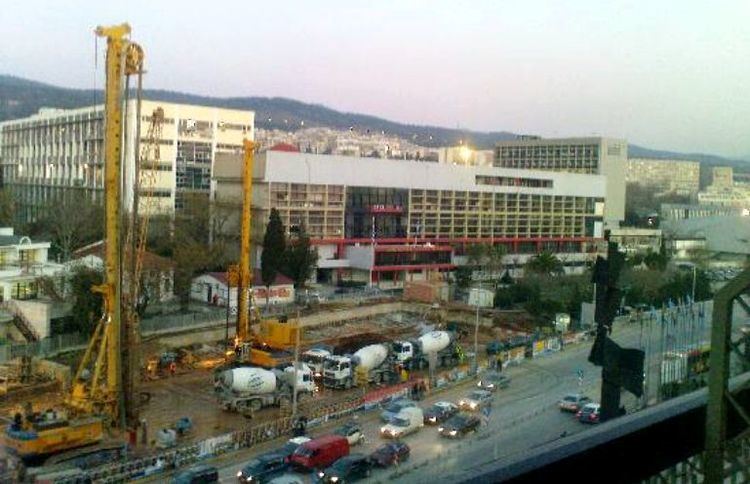 | ||
Locale Thessaloniki Urban Area Transit type Rapid transit/Light metro System length 9.6 km (6.0 mi) (2018)
33 km (21 mi) (when finished) Track gauge 1,435 mm (4 ft 8 ⁄2 in) standard gauge | ||
The Thessaloniki Metropolitan Railway (Greek: Μητροπολιτικός Σιδηρόδρομος Θεσσαλονίκης Metropolitikós Sideródromos Thessaloníkes), or Thessaloniki Metro (Greek: Μετρό Θεσσαλονίκης Metró Thessaloníkis), is an underground rapid transit system that is under construction in Thessaloniki, Greece.
Contents
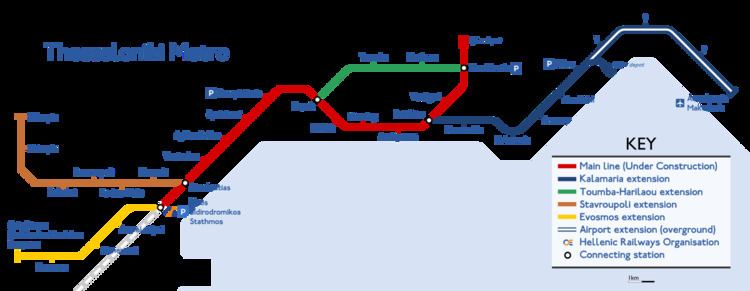
Background
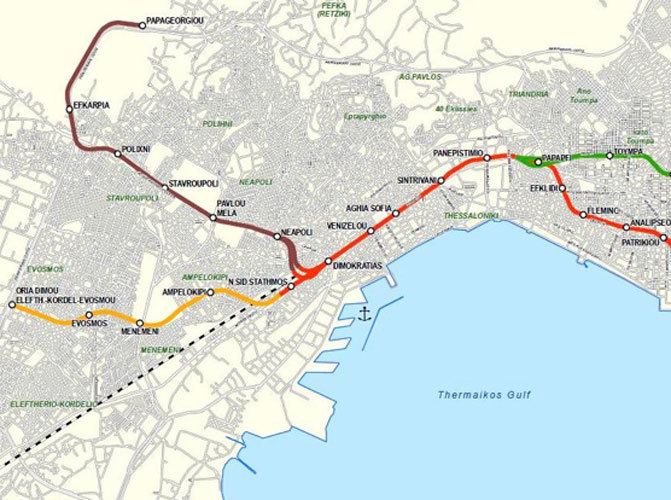
The first to suggest an underground railway system for Thessaloniki was Ernest Hébrard during the redesign of the city in the early 1920s, to allow easy access from the city's downtown to the planned outskirts of the city (now Kalamaria).
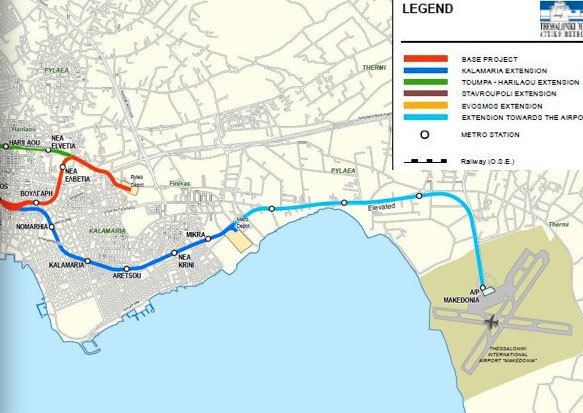
The idea for constructing a metro was only seriously considered in the 1980s and it took almost 20 years for the official groundbreaking works to start. This was due to a series of failed contract competitions and several appeals against awarded contracts. A previous attempt to construct an underground mass transit system in Thessaloniki took place in 1986-1988, when a short cut-and cover tunnel was constructed along a part of Egnatia Avenue near the University, but failed because it was underfunded.
The project
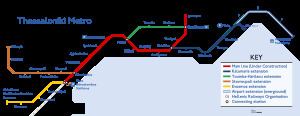
The construction of the much awaited Thessaloniki metro started in June 2006 and should be completed by 2018. The project has been substantially delayed by significant archeological discoveries during its construction which have been responsible for delaying the project for up to three years or more.
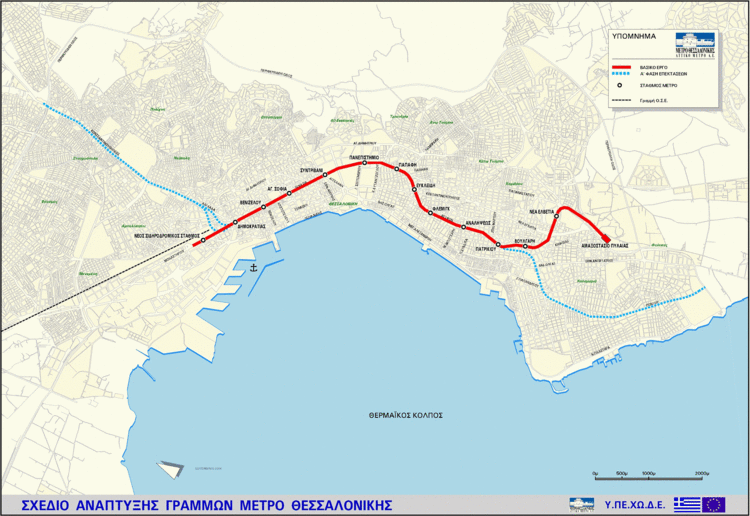
The first phase of the project consists of 9.6 kilometres (6.0 mi) of underground line (with twin tunnels), 13 stations along its length, and a depot at the southeast end of the line. The total budget for the project is about 1.1 billion euro. Part of the budget (€250 million) is funded from the 3rd CSF and a loan for €250 million has been arranged with the European Investment Bank.
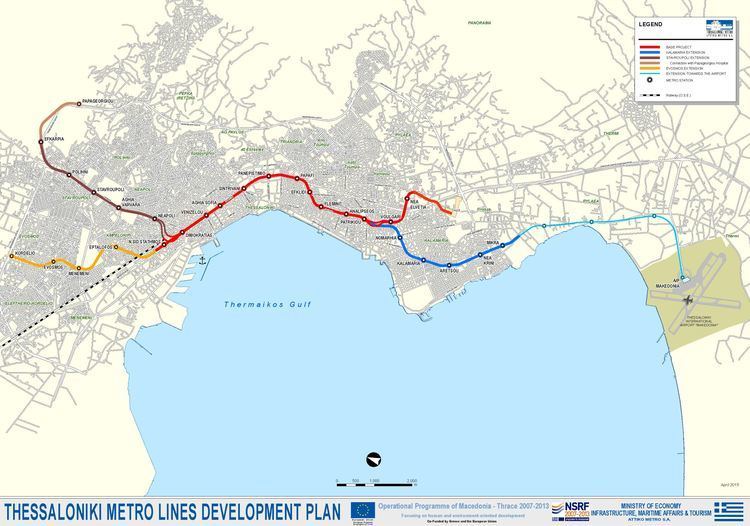
Phase 2 of the project was approved to begin construction prior to the operation of the Phase 1 line and in May 2009 Attiko Metro put to tender for the construction of the extension to Kalamaria. Attiko Metro claims this will prevent the construction of the transfer stations from interrupting the basic line operation.
Thessaloniki's metro will share many similarities with the Copenhagen Metro which operates as a light metro. It will feature 18 AnsaldoBreda Driverless Metro trains that will run in separate tunnels in each direction, while each station will feature glass walls with automatic doors on the edge of platforms, for added safety. The project is being constructed by a Greek-Italian consortium and overseen by Attiko Metro, the company that manages the Athens Metro.
Progress
Considerable progress has been made to the construction of the metro system since work began in 2006. Overall, 7.2 km of tunnels have been dug underneath the city, 3.8 for direction A and 3.04 for direction B. As the overall length of a single tunnel is estimated to be 9.6 km, 37.5% of the entire network has already been dug. As of 2015, the following progress has been made to the stations on Phase 1 of the construction.
Phase 1 (under construction)
Park and ride
Several park and ride facilities are planned to facilitate the large number of vehicular commuters in the city. These include two facilities at the New Railway Station with four underground levels of 450 and 600 parking spaces, 1,000 underground spaces shared over four levels at the Panepistimio (University) station and 650 underground spaces over one level at the Nea Elvetia station. A total of 3,700 park and ride spaces have been planned for Phase 1 of the project.
Phase 2
Construction of the Phase 2 extension to Kalamaria (to the southeast) started in summer 2014. Tenders for the Phase 2 Stavroupoli extension, to Efkarpia (to the north), have not been called for yet.
Phase 3
Phase 3 includes the proposals for further extensions to the Northwest and the Southeast.
Construction on this phase shall begin right after phase 2, with a completion date looking at around 2020; it has been announced that by then the city will operate 33 km (21 mi) of metro line.
